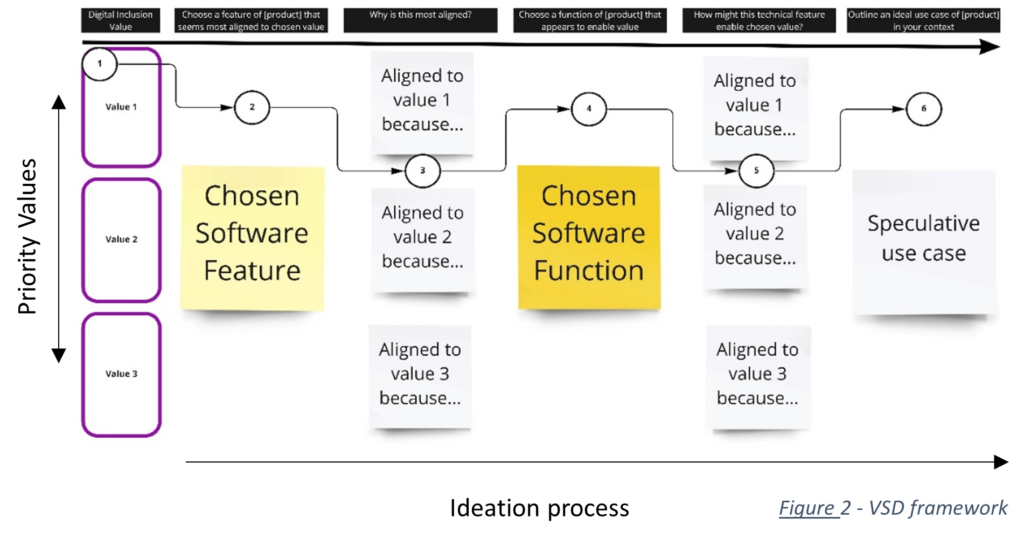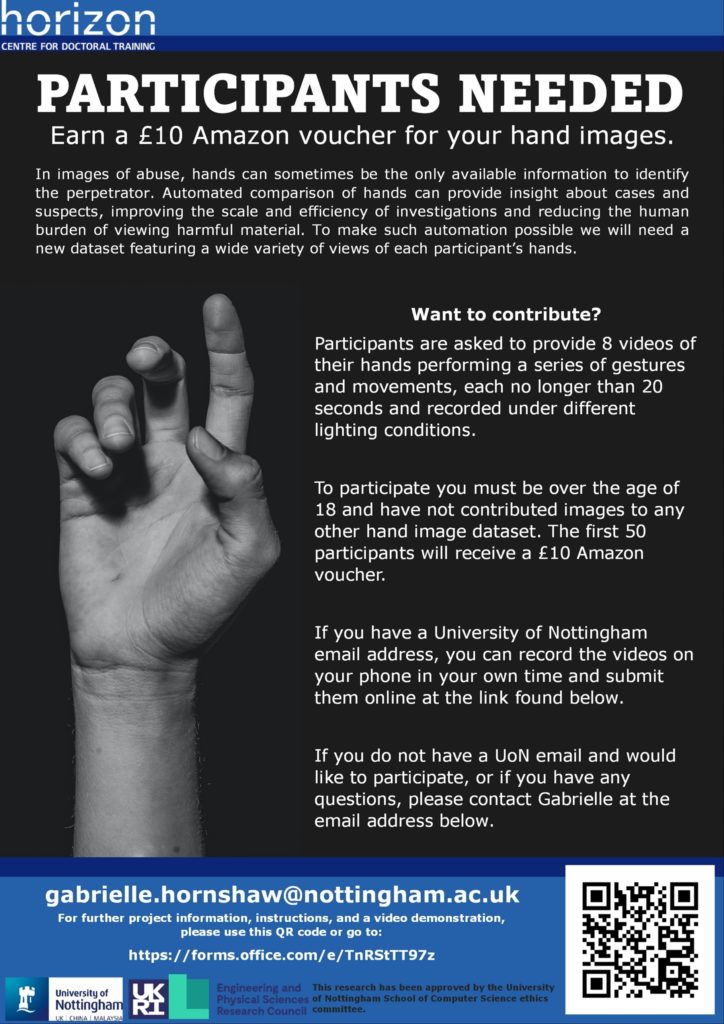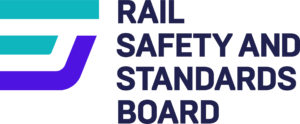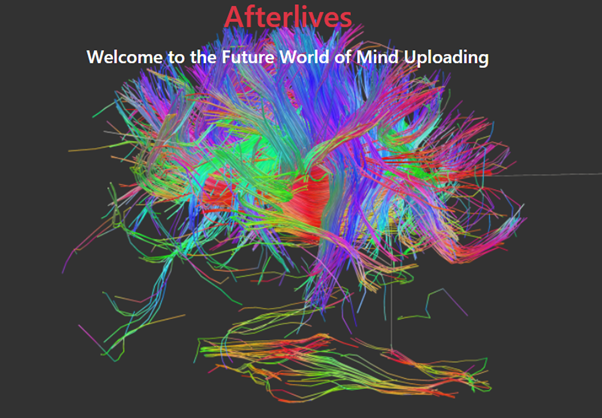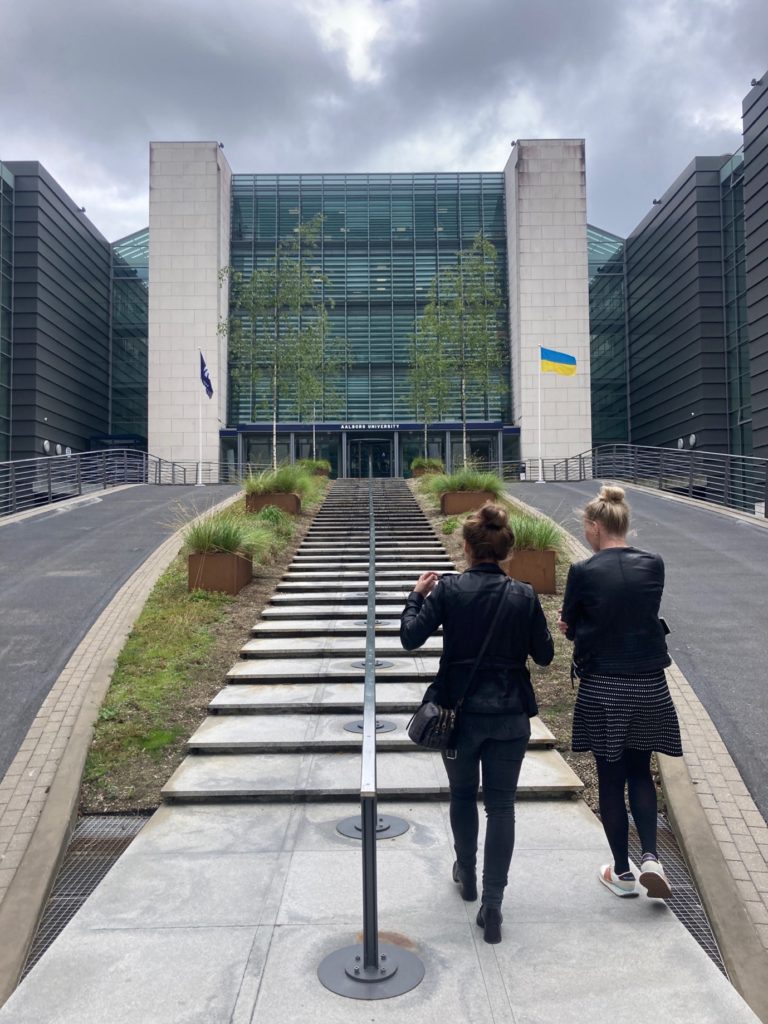post by Cecily Pepper (2019 cohort)
My research surrounds the exploration of how social media can impact the mental wellbeing of care-experienced young people. In June 2023, I ran an enrichment event for young people in care with the help of my supervisor, Elvira Perez Vallejos. As my doctorate journeys into its final stages, it was important to me to consider how I can maximise the impact of my work. Along with public engagements and presentations, Nottingham City Council and I decided that a broadening horizons event at the university would be the most impactful for the young people. With the help of Mark Ball, who has kindly offered advice and support throughout my research regarding safeguarding, Elvira and I set to work on the organisation of an event that would be both enjoyable and offer the opportunity to discuss higher education and research.
Along with Nottingham City Council, we decided to reach out to the Cobot Maker Space: an innovative space that explores human-robotic interaction at the University of Nottingham (https://cobotmakerspace.org/). While this space is not directly linked to my research, it was thought to be an ideal choice for the visitors as it’s an interactive and fun space that would be enjoyable and inspiring. The Cobot Maker Space kindly agreed to hosting the event and providing fun demonstrations, whilst also generously gifting the young people with a robotics kit.
After liaising with the stakeholders, the enrichment event was organised for June 2023. The event consisted of a tour of the Jubilee campus, interactive demonstrations led by the Cobot Maker Space team, and (crucially) pizza and snacks. The young people were encouraged to ask any questions they had regarding university or higher education, which they did indeed take the opportunity to do so. All of the young people asked questions about college or university, asking about different courses and paths into higher education. It was a pleasure to have these discussions with them and we spoke about how care experience might impact this. I spoke about my research with care-experienced young people who have been to university, showing that it is possible for anyone to go to university if they want to, despite the challenges they face and how unlikely it may seem for them.
The young people and their residential carers thoroughly enjoyed the event, with the cobot demonstrations being incredibly well-received. Feedback received from social workers showed how excited the young people were, with them talking about research and robotics with the other young people and staff when they got home. This feedback was greatly appreciated, and we were very pleased that the event had been impactful for the young people. In addition to this, the event also had an impact on the university staff and researchers, as it triggered discussions surrounding further outreach events such as after-school clubs for care-experienced young people and people from other minority groups.
Overall, the enrichment event was successful, and I’m pleased to say it made a positive impact on the young people. I’d like to extend my thanks to everybody involved, but especially the researchers at the Cobot Maker Space who went the extra mile to ensure the event was fun, interactive and inspiring.



